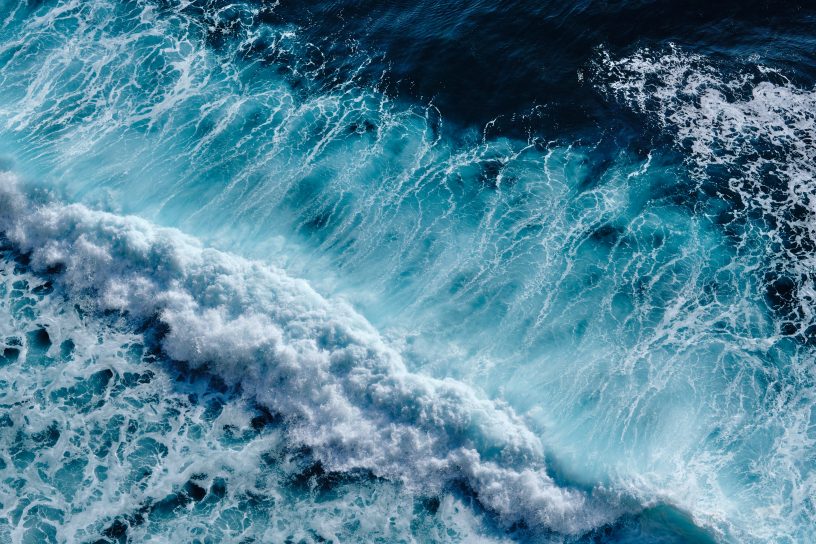
When ‘clean energy’ comes up short: Wind farms threaten Taiwanese white dolphins
By Amber Dearden
In the Eastern Taiwan Strait, between China and Taiwan, 22 large wind turbines stand tall above the waters. Now in operation, these giants generate 128 MW of “green” energy, of which Taiwan is desperate for, to replace coal, oil and nuclear power generation. Hundreds more turbines (5,700 MW) are planned for installation offshore by 2025[1], and another 1,000 MW will be added annually thereafter, which will make this location one of the world’s largest wind farms.
But this “green energy” may exact a toll on the environment. The continued
windfarm construction could result in the extinction of Taiwan’s only endemic
marine mammal, the Taiwanese white dolphin. The harsh reality is that the construction
of windfarms that create fishery exclusion zones will push gillnet fishers inshore
into prime dolphin habitat. This will exacerbate the existing threat from
fisheries interactions thereby resulting in a significantly increased risk of
entanglement and death.

Taiwanese white dolphins are listed as critically endangered by the IUCN. Most recent counts estimate the remaining population to be fewer than 75 individuals, and this number is dropping (Wang, 2012). These small dolphins have a limited habitat, living only in the shallow coastal waters (average of 7 m depth) in the Eastern Taiwan Strait (Ross, 2011). The offshore wind farms are being placed in and adjacent to this habitat. As these dolphins are unable to survive in deeper waters, they have nowhere else to go.
The first windfarm was completed in 2019, and another three larger farms are being installed in this year 2020. Despite warnings from international experts of the Taiwanese White Dolphin Advisory Panel (TWDAP), along with suggestions for management and mitigation, the construction of these turbines went ahead with only limited protection measures for the dolphins. The construction brings an onslaught of additional threats, on top of the existing ones. For example, extreme noise from pile driving disrupts the dolphins ability to detect prey; increased boat traffic from large ships carrying construction materials increases the likelihood of vessel strike; and increased turbidity of the water from dredging and scouring of the seafloor decreases water quality and has the potential to stir up diseases.
The biggest threat to the dolphins continues to be entanglement and injury associated with the fishing sector (Slooten, 2013). Local fishers in Taiwanese white dolphin habitat use gill nets, in which dolphins get injured or drown. Many dolphins bear scars from previous interactions – as much as 64% of the population bear scars from propellers, ropes and nets.
Around the world, entanglement is an important conservation threat for small cetaceans. It has been identified as the root cause of the decline of other rare dolphins such as the baiji, Lipotes vexillifer (now extinct); the vaquita, Phocoena sinus (now the most endangered marine mammal in the world); the Maui dolphin, Cephalorhynchus hectori maui (critically endangered); the Mekong River dolphin, Orcaella brevirostris (sub-population, critically endangered); the Irrawaddy dolphin and O. brevirostris (sub-population, critically endangered) (Brownell, 2019).
Present challenges require creative solutions, which are currently being developed by international expert advisory group TWDAP[1], chaired by the Vice President of Research at Ocean Wise, Dr Peter S Ross. Established in 2008, TWDAP consists of 24 Taiwanese and international professionals working in support of the conservation of the Critically Endangered Taiwanese white dolphin. Members consist of experts in marine mammal science, fisheries science, ecology and conservation. As well as members continuing their individual research on marine mammal issues, proposals are underway for conservation strategies to reverse the decline of the TWD.
In 2019, a workshop was held that resulted in the creation of a Recovery Plan for the TWD[2]. This plan detailed actions necessary to halt, and even reverse, the decline of the TWD; the emphasis being placed on eliminating gillnets in and around the TWD habitat.
The Recovery Plan details a win-win-win scenario, which could benefit everyone. By compensating Taiwanese fishers to transition to more sustainable (artisanal) fishing methods or to another profession, the windfarm sector can help to reduce the threat of fisheries interactions. This strategy would not only garner social license for the wind industry and benefit fishers who would otherwise lose their livelihoods but would also result in a real conservation ‘win’, by achieving what green energy ultimately promised the world.
This is just one example that illustrates the vulnerability of small, habitat limited, coastal cetaceans. They face many more threats than offshore marine mammals due to their proximity to human activities. They are much more likely to encounter boats, nets, noise, and pollution from runoff. Harnessing all available conservation tools is imperative to protecting these extremely vulnerable marine mammals from extinction. By developing and applying science-based tools and enabling multi-sectoral collaboration it is possible to derive practical solutions to the benefit of everyone involved. The time to act is now. Without focused and energetic interventions, these dolphins will not last another generation, a fate that could be forever tied to green energy.
References
Brownell, R. et al. (2019). Bycatch in gillnet fisheries threatens Critically Endangered small cetaceans and other aquatic megafauna. Endangered Species Research, 285-296.
Ross, P. S. et al. (2011). Ten guiding principles for the delineation of priority habitat for endangered small cetaceans. Marine Policy, 483-488.
Slooten, E. et al. (2013). Impacts of fisheries on the Critically Endangered humpback dolphin Sousa chinensis population in the eastern Taiwan Strait. Endangered Species Research, 99-114.
Wang, J. Y. et al. (2012). Mark-recapture analyses of the critically endangered eastern Taiwan Strait population of Indo-Pacific humpback dolphins (Sousa chinensis): implications for conservation. . Bulletin of Marine Science, 885-902.
Posted August 11, 2020 by Ocean Wise







